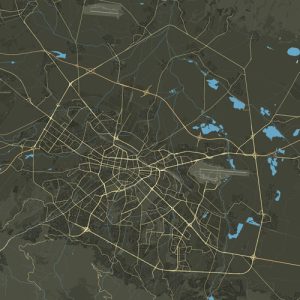The life of one of the greatest Bulgarian writers takes place in the vast Danube plain. She and her people became an inspiration for his work and thus he became the “singer of Dobruja”. Yordan Yovkov was born in Zheravna in 1880. He spent his childhood here, but when he turned 13, the family moved to Dobruja, where his father worked. In addition to being a poet, he fully deserved the recognition of “master of the short story” with the unforgettable, humanistic collections “Old Mountain Legends”, “Last Joy”, “Evenings in the Antimov Khan”, “If They Could Talk” and many others.
And the people of Zheravna have not forgotten him. If you have a way to go, be sure to look for the house-museum where he was born. It is modest, one-story and suits him very well. You will also see him in the yard, as if carried away by memories. And when you find yourself inside the house, you will feel the atmosphere that surrounded it.
Zheravna, not by chance already in 1958, because of the preserved more than 200 wooden houses built during the Renaissance, was declared an architectural reserve and is visited by more than 20,000 tourists every year. It is impossible to describe, one must feel the charm that emanates from these stately buildings.
There are several hypotheses about the origin of the name Zheravna. According to early chronicles, there was a town with the Slavic name Potuk in the same place. In the X-XII centuries, the settlement was known as Zervona or Zervona. The Ottomans called it Bashkoy /main village/ and Žeruna /from Žerina – a type of tax/. With its current name, Zheravna, the settlement was named for the first time in 1835 by Raino Popovich. It is believed that the root of the word comes from the Slavic žernov /mill stone/ because of the numerous former mills in the village.
The main livelihood in Zheravna was sheep farming and the trade in wool, aba and shayaks, which were in great demand. From here, they also went to the market with khaitans, soap, slippers, Kuyumji products. Houses were built with shops or workshops on the first floors, where shoemakers worked. Zheravna was also a cultural center, in it the Hilendar Monastery had a methoch, preserved to this day. It is believed that the “History of the Slavonic Bulgarians” was transcribed in it. The economic upswing also contributed to cultural development, buildings with educational and religious purposes were built, 5-6 priests were needed to serve the large parish.
The flourishing village did not remain unaffected by the attacks of the Kurdzhaliya towards the end of the 18th century, but really declined after the Liberation, when local products could no longer compete with manufacturing production. After the Crimean War, the Zeravna kehais began to transfer their herds to Dobruja and move their families there. Others scattered throughout the now free fatherland to seek a living as clerks, teachers, and merchants.
At the beginning of the 20th century, the village was practically deserted. In the 1930s, the heirs began to sell off the houses – architectural masterpieces – for next to nothing to small entrepreneurs who demolished them for the timber and roof tiles. Fortunately – not all.
In 1958, the revival of Zheravna began, many of the houses were declared cultural monuments, and today it is one of the most attractive sites for our and foreign tourists.
Work time:
Every day: 8.30 – 12.00 and 13.00 – 17.30.
Entrance fees:
adults – BGN 4.00,
children and pensioners – BGN 2.00,
talk in Bulgarian – BGN 10.00,
talk in a foreign language – BGN 20.00
Contacts:
Tel: +359 4585 391
Tel: +359 4585 202

